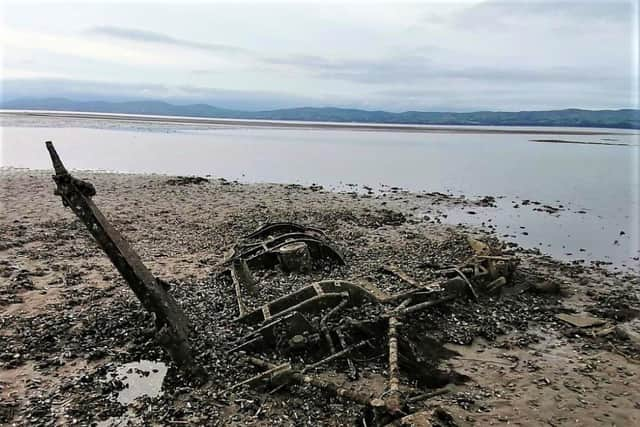High-tech marine survey uncovers rare Royal Navy Dragonfly helicopter 1958 crash site on the shore of Lough Foyle
and live on Freeview channel 276
The wreck of the rare Royal Navy Dragonfly was identified at the shore of Lough Foyle in a survey being carried out for Northern Ireland's Environment department, which is mapping the entire coastline.
Its exact location has not yet been revealed, however, due to what the department described as "a significant number of potentially live WW2 and post war ordnance".
Advertisement
Hide AdAdvertisement
Hide AdIt also warned that the crash site is located on "dangerous soft sediment" on the mudbank shore of the Lough in Co Londonderry.


The department also revealed that the wreckage was uncovered by chance, with the survey of the coastline being carried out primarily to identify structures and landscape features that may be at risk from the rise in water levels expected due to climate change.
It is being conducted using the high-tech LiDAR method – which involves targeting the surface with a laser and measuring the time for the reflected light to return to the receiver, allowing surveyors to build up a highly accurate three-dimensional map.
A spokesperson for the Department of the Environment and Rural Affairs explained: “The Topographic LiDAR & Orthophotography survey, completed in early 2022, provides high resolution aerial photographs, near-infrared imagery, and 3D laser scans of the ground surface. As well as providing detailed information on what our coastline currently looks like, it is also being used to identify man-made structures and landscape features which are at risk from erosion and sea level rise.”
Advertisement
Hide AdAdvertisement
Hide AdThe data has been passed on to marine archaeologists, who in turn uncovered the 1958 crash site – along with a host of other discoveries.
"Marine archaeologists are utilising this data to identify and assess archaeological and historical sites that lie around Northern Ireland’s coastline,” the department said.
"These can include historic wrecks, medieval fish-traps, monastic settlements, castles and fortifications, quays, slipways, and Industrial-era seaweed cultivation sites. While many of the sites examined are recorded on the Historic Environment Record of Northern Ireland (HERoNI), the research has so far identified over 150 new heritage sites, with 100 of these below the high tide mark and the remainder above.”
The spokesperson continued: “The discovery of a Royal Navy Dragonfly helicopter was an unexpected find during this work. Remnants of aircraft structure were initially spotted in the aerial photos of Lough Foyle and a further physical inspection of the site revealed the wreck of a very early form of helicopter, lying on its starboard (right) side on the gravelly bank.
Advertisement
Hide AdAdvertisement
Hide Ad“Though heavily corroded, the frame of the helicopter and its three rotor blades were mostly intact, with remnants of the ‘Royal Navy’ stencilling still discernible down the tail boom. Further research involving officials from the National Museum of the Royal Navy (Plymouth), the Fleet Air Arm Museum (Yeovilton) and the Ulster Aviation Society, identified the aircraft as a 1955 Westland Dragonfly naval air-sea search and rescue helicopter, based at the Royal Naval Air Station Eglinton, now the City of Derry Airport. The helicopter had come down on 25 November 1958, during a recovery exercise.”